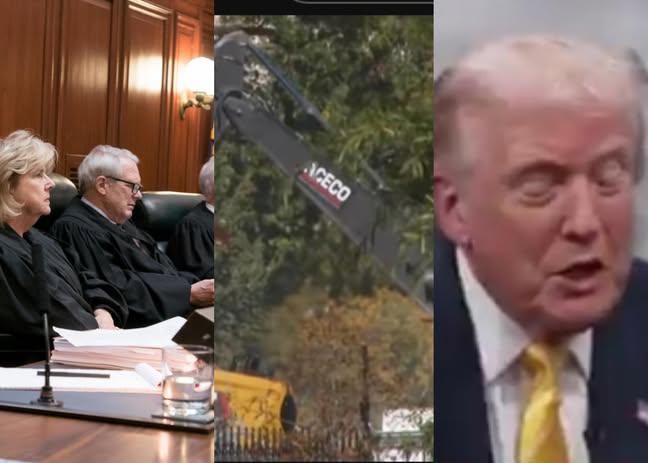CELEBRITY
JUST IN: The Supreme Court sets a hearing date for Donald Trump’s alleged illegal demolition of the White House East Wing after the National Trust for Historic Preservation filed a $10 billion lawsuit against him for violating federal environmental and heritage protection laws

A major legal showdown is set to unfold at the highest levels of U.S. government over the dramatic transformation of the East Wing of the White House, as the National Trust for Historic Preservation has launched a sweeping lawsuit against Donald J. Trump for alleged illegal demolition and disregard of federal preservation laws. The stakes have escalated beyond mere architecture: this is a battle over power, precedent and the nation’s very symbolic heart.
The Trust’s claim, reportedly seeking as much as $10 billion in damages, accuses Trump of ordering the destruction of the historic East Wing on the grounds that it violated the National Historic Preservation Act, the National Capital Planning Act, and other federal safeguards meant to protect America’s built heritage. Despite early assurances that no irreplaceable structure would be harmed, images and court filings show crews tearing through the East Wing’s two‑story offices, colonnade and even parts of a White House theater — a space that for a century embodied ceremonial and social life inside the nation’s most iconic residence.
The crux of the complaint is procedural and symbolic: critics say Trump bypassed longstanding review processes, refused to fully consult the National Capital Planning Commission or the Commission of Fine Arts, and proceeded in secrecy. The Trust’s letter demanded an immediate halt to demolition until proper public review, warning that a planned 90,000‑square‑foot ballroom project adjacent to the White House would “overwhelm” the original residence and permanently alter the classical design that generations of Americans have viewed as a national treasure.
Now comes the dramatic twist: according to multiple circulating reports, the nation’s highest court — the Supreme Court of the United States — has set a formal hearing date to adjudicate the matter. The decision to bring this dispute to the Supreme Court signals that the issue transcends private grievance and enters the constitutional arena: how far may a sitting president go, unilaterally, when altering “the People’s House”? Skeptics of the process point to a fundamental tension: even if the White House is exempted from certain statutory reviews, as some legal arguments assert, the optics of bulldozing historic fabric without transparency or meaningful public input has struck a nerve.
From Trump’s vantage, the project is presented as modernisation, practical and stylish: he argues America needs a state‑of‑the‑art ballroom, that the East Wing was under‑utilised, and that previous presidents simply never acted. At one point he stated he had the “full legal authority to modernise, renovate and beautify” the White House. But opponents counter that this is not just about taste, but precedent: if the most powerful office in the land can sidestep historic and environmental safeguards, what message does that send about rule of law and public accountability?
For the Trust, the lawsuit underscores far more than a building. Their argument is that heritage and architecture bind generations — when a space within the White House is erased without pausing for public reckoning, the cultural continuity of the nation suffers. They not only seek monetary redress, but a reaffirmation of institutional checks and the preservation of national memory. The looming hearing will test whether judicial review can rein in such sweeping executive actions, or whether the presidency holds de facto carte‑blanche over the nation’s most emblematic residence.
As the date approaches, all eyes will be on how the court frames standing (who has the legal right to sue), scope (which laws apply), and remedy (what happens if the court finds wrongdoing?). For Americans and observers abroad alike, the outcome may shape how future presidents engage with the architecture of power and the symbolism of place. The demolition of the East Wing, once quietly used for everyday White House life, now stands at the centre of a legal storm—and through it, we will learn if any structure is truly beyond law.



















